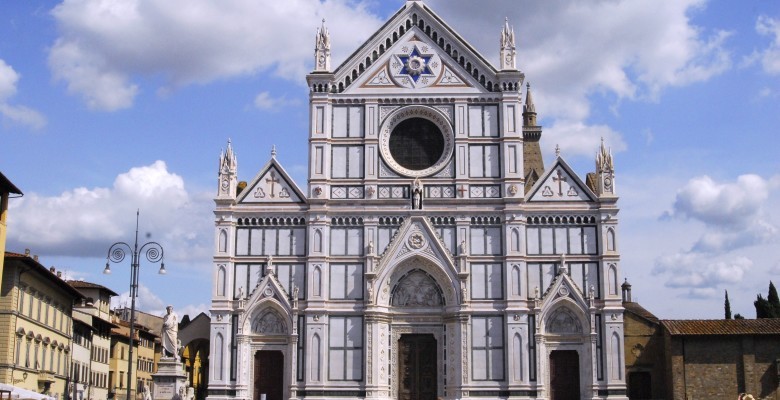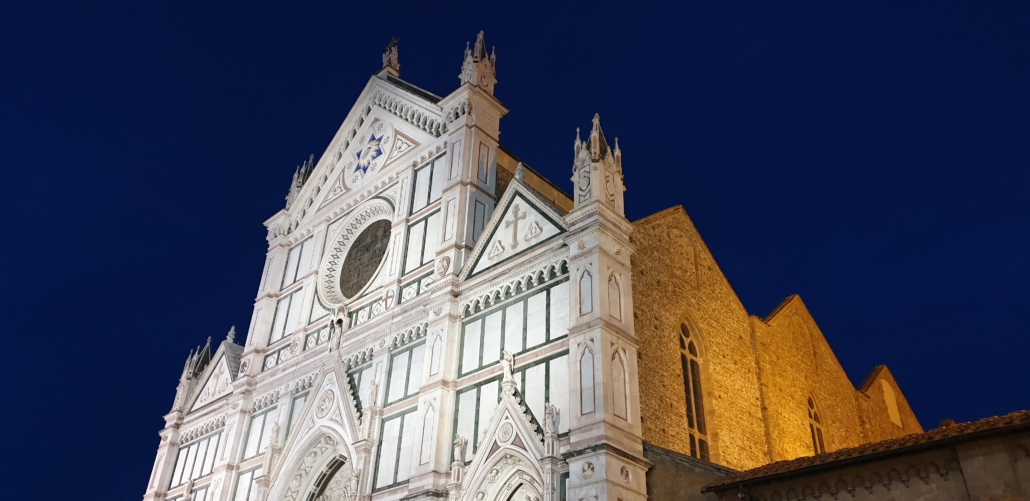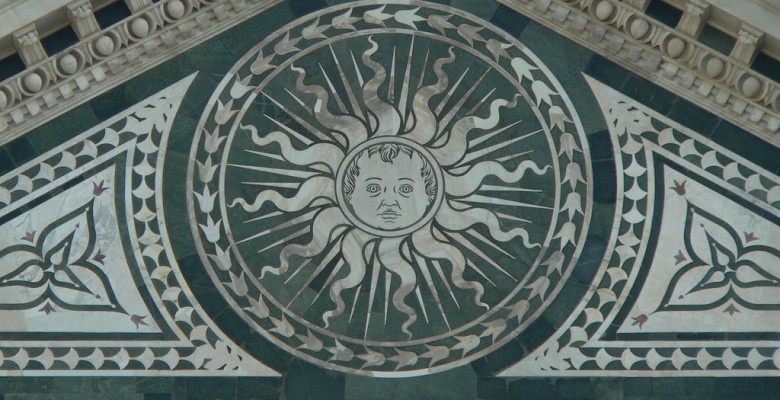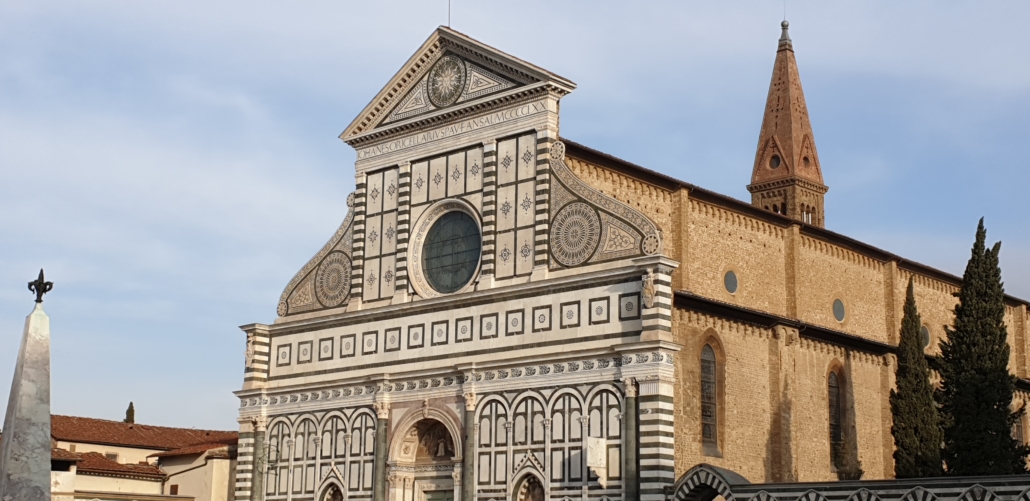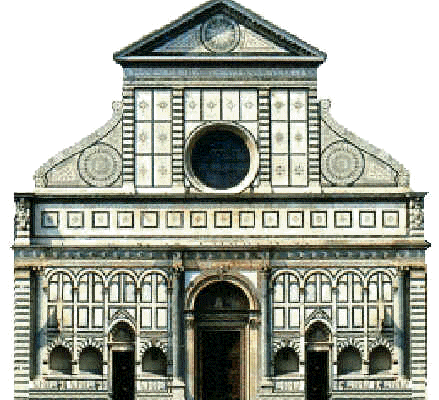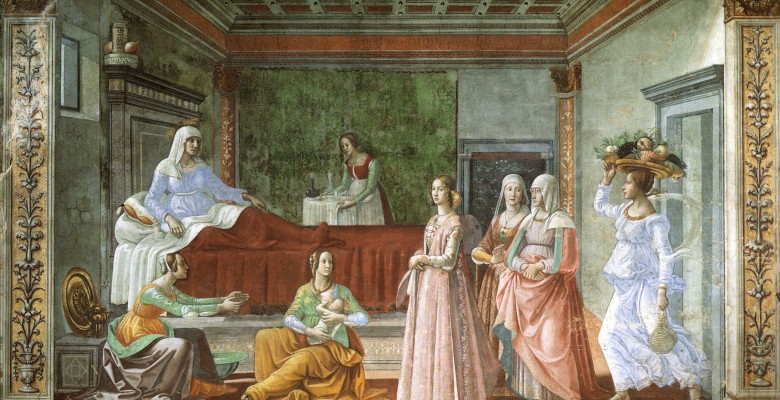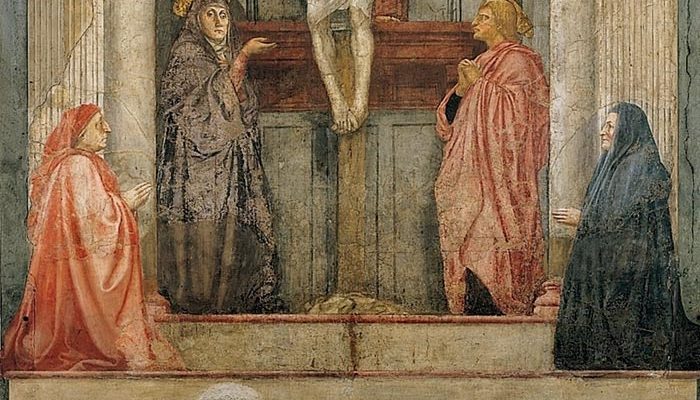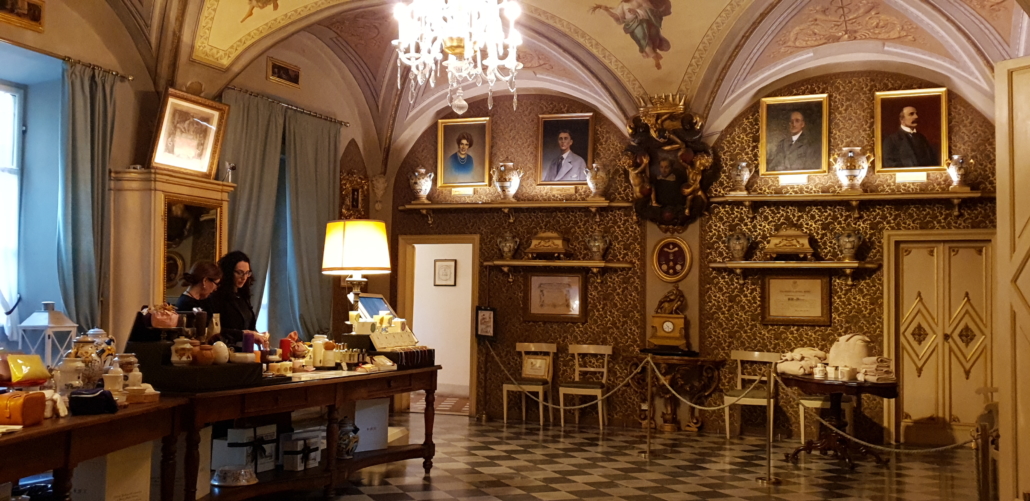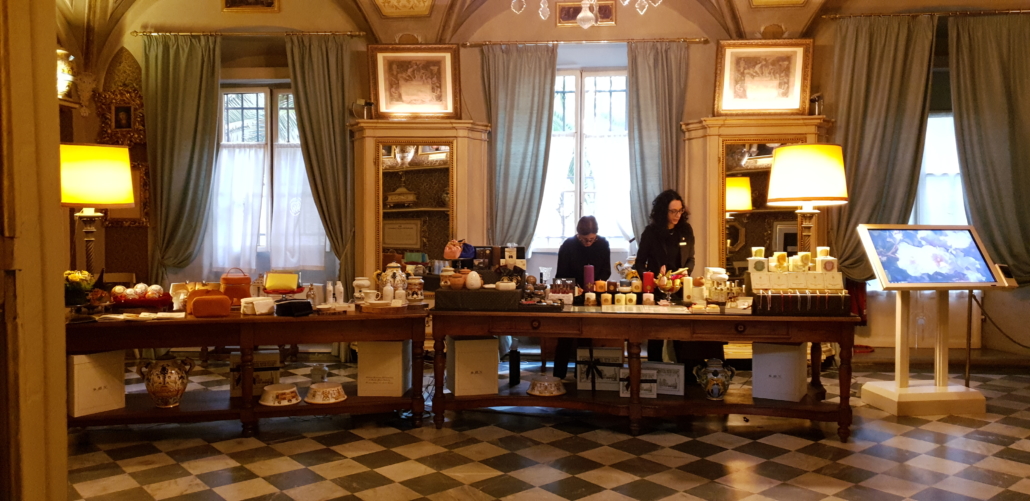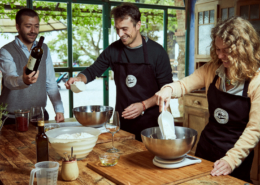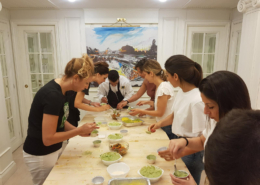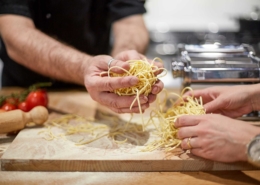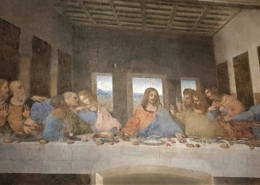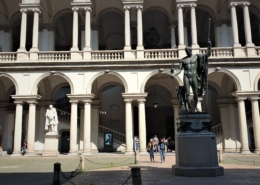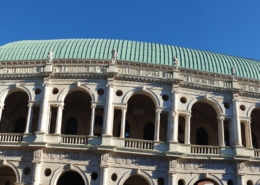Giotto in particular frescoed the chapels of the two banking families, Bardi and Peruzzi (1320-25) . Later on some of his closest collaborators, such as Taddeo Gaddi and Maso di Banco were entrusted the decoration of other family chapels (Baroncelli, Pulci, Berardi).
And so on: in total Santa Croce can boast 16 private chapels!
Taddeo Gaddi also conceived the magnificent stained glass windows, and, miraculously enough, are still in excellent conditions.
One of the most enchanting sculpture works is a gray stone the gilt Tabernacle of the Annunciation created by Donatello in 1433, upon his return from Rome. Another is the white marble pulpit, with its very realistic rendering of natural details is an absolute masterpiece by Benedetto da Majano.
The 15th century saw an important addition, known with the name of Cappella dei Pazzi, an absolute gem of the Early Renaissance (around 1430) by Filippo Brunelleschi. Located on the first cloister, it was used as a chapter house by the Friars.
Based on simple geometrical shapes, the square and the circle, conveys a strong feeling of harmony and balance. The lapis lazuli blue glazed terracotta decorations by Luca della Robbia give a touch of color to the severe geometries. The umbrella shaped dome is probably the most striking feature of the whole building.
During our Great Churches of Florence tour your guide will tell about the famous conspiracy that the Pazzi family plotted against the archrival Medici.
We cannot leave Santa Croce without paying a tribute to the tombs of Michelangelo (who died in Rome, but whose body was ‘kidnapped’ by the Florentines), Galileo Galilei (who obtained to be buried in a church only 95 years after his death), Niccolo’ Machiavelli, Gioacchino Rossini and many more.
Florence: Santa Crioce & Santa Maria Novella continues with a stroll through the busy central streets will bring us to Santa Maria Novella, the major Dominican church in Florence, standing few steps away from the train station.
Not an ideal location , but the church is so replete of striking masterpieces that it cannot be missed, even on a short stay!
First of all the façade, a joy for the eyes and for the spirit, based on simple geometric shapes and mathematic proportions, almost like a stone mantra, inviting to prayer and meditation. It is thanks to the Rucellai family (textile merchants and bankers) that Leon Battista Alberti, who had already built their famous palazzo, intervened on the façade, completing the preexisting Gothic structures.
By the 1570s three astrological instruments were inserted in the façade. Your guide will tell you what was their purpose.
The interior was designed to allow the largest possible congregation, as the Dominicans were well known for their great preachers. Compared to Santa Croce it is smaller and with a stronger vertical rhythm.
Like the Franciscans in Santa Croce, the Dominicans of Santa Maria Novella would give the altars and chapels in patronage to wealthy families and powerful institutions. The Friars would pray for your soul after your death (ensuring you a shorter stay in Purgatory and a quicker ascent to Paradise!) and you could use your chapel for weddings, baptisms and other ceremonies.
Similar to the great churches of Florence, also Santa Maria Gloriosa dei Frari and San Giovanni e Paolo in Venice had, for wealthy families or congregations, similar functions and purposes.
Paintings and statues could be a powerful way to assert your virtues, social status, political and civic ideals. It was definitely not just a matter of religion and devotion !
The greatest example of how you could use your chapel to promote your family, friends, lineage inside the great churches of Florence is definitely the extraordinary Tornabuoni Chapel, starring three huge and very bright frescoes by Domenico Ghirlandaio (1485-90).
Giovanni Tornabuoni, who’s sister was married to Piero de’ Medici and was Lorenzo il Magnifico’s mother, commissioned him the stories of Virgin Mary and San John the Baptist.
Ghirlandaio was to include in the religious scenes the members of the Tornabuoni family, their allies, their friends, even the intellectuals who belonged to their circle (like for instance the humanists Marsilio Ficino and Angelo Poliziano). Your guide will point out the differences in the social role of male and female portraits and will sketch some of the most outstanding characters.
A world will be spent about male and female fashion in 15th century Florence.
The most important painting in Santa Maria Novella is the huge fresco of the Trinity by Masaccio (1425-27), considered one of the milestones in the development of Renaissance art.
Vasari, pointing out the very strong optical illusion of three dimensionality offered by the architectural elements and by the focused perspective says ‘It looks like the artist had made a hole in the wall’.
We can imagine the amazement of the Florentines in front of all the innovations proposed by Masaccio in this painting, that for the first time breaks away with the gracious shapes of the International Gothic and places reality at the center of his world.
We won’t leave the Church without paying tribute to the great wooden Crucifix by Giotto (around 1295), recently restored, that the artist painted when he was about 20. Your guide will relate about the importance of this work in art history.
Florence: Santa Croce & Santa Maria Novella continues inside the famous perfumery/pharmacy at Santa Maria Novella.
The Dominicans originally owned the oldest pharmacy of Florence, known as the ‘Officina Profumo Farmaceutica of S. Maria Novella’.
Its origins date back to the 13th century, when the Dominicans started to grow officinal herbs in their garden, and prepare balsams and creams.
In 1612 when Friar Angiolo Marchissi opened a “sales point” inside the Pharmacy’s cloister.
From that moment, the activity of Santa Maria Novella has never ceased, although today it doesn’t belong to the Friars anymore.
The rooms in Via della Scala are splendidly decorated, and you will enjoy the old majolica vases. But above all, your nose will be in heaven!
Your guide will tell about the perfumes created here for Caterina de Medici, their diffusion in France when she became the Queen, and much more.
If you found our Florence: Santa Croce & Santa Maria Novella interesting you might also like our similar tours in Venice:
The Venetian Renaissance Painting at Frari and San Rocco
From Gothic to Renaissance

